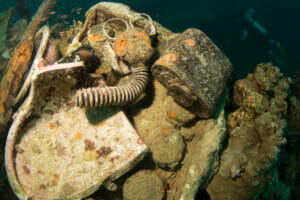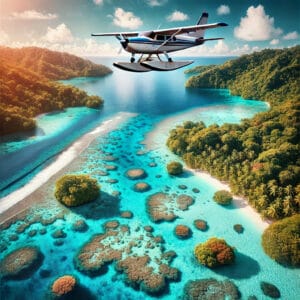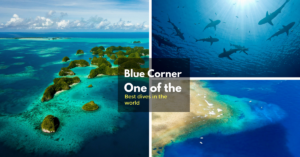Everything You Need to Know About Diving Palau — Currents, Seasons, Marine Life & Site Types
Palau is a dream destination for divers, and for good reason. Tucked between the Pacific and the Philippine Sea, this Micronesian archipelago is home to some of the most exhilarating dive sites on Earth.
Whether you’re here for sharks swirling in the current, gliding manta rays, or WWII shipwrecks steeped in history, Palau delivers an underwater experience unlike anywhere else.
But here’s the thing: no two dives in Palau are ever the same.
Conditions here are dynamic. Currents shift. Visibility changes with the seasons.
Some dive sites are best at high tide, others shine at slack. Knowing where to go—and when—is the difference between a good dive trip and a phenomenal one.
That’s why we created this comprehensive guide.
In this article, you’ll learn:
What makes Palau’s dive conditions unique, from wild drifts to calm coral gardens
The different dive site types you’ll encounter (drift, wall, wreck, cave, cleaning stations)
The best times of year for sharks, mantas, visibility, and calm seas
Planning tips based on tides, marine life cycles, and diver skill level
And where to find in-depth dive site profiles linked throughout this guide
Whether you’re a first-timer or a returning guest, this is your go-to reference for understanding Palau’s dive environment.
It’s also the starting point for exploring dozens of detailed site write-ups—each linked below in the appropriate section.
Ready to plan your Palau dive adventure?
Let’s dive into the currents, coral walls, and blue holes that make this one of the best diving destinations in the world.
Table of Contents
🌊 Dive Conditions in Palau — What to Expect
Diving in Palau is all about timing, tides, and understanding the flow of the ocean. The islands sit at a crossroads of nutrient-rich currents, making the waters teeming with life, but also dynamic. If you know what to expect, you’ll get the absolute best out of your dives.
🌀 Currents: The Lifeblood of Palau’s Reefs
Palau is famous for its drift dives, where you let the current carry you along coral-covered walls or through deep channels. These currents are what attract sharks, jacks, barracuda, and mantas, turning otherwise calm sites into underwater highways of marine life.
Reef hooks are essential at sites like Blue Corner and Ulong Channel, where we “hook in” to hover effortlessly as the current flows.
The direction and strength of currents can vary by tide cycle (ebb vs. flood), moon phase, and season.
Drift dives in Palau can be anything from a gentle ride to a thrilling rush, and we’ll always match the site and current to your comfort and experience level.
🌦️ Seasonality: Dry vs. Wet Season Diving
Palau is a year-round dive destination, but seasonal changes affect visibility, marine life activity, and surface conditions.
Dry Season (November to April):
Peak diving season
Best visibility: 25–30+ meters (80–100 feet)
More consistent weather and calmer seas
Stronger currents = more pelagic action
Wet Season (May to October):
Slightly reduced visibility (~15–20 meters)
More plankton = more manta feeding behavior
Occasional rain squalls and surface chop
Still fully diveable with good planning
Despite the names, Palau doesn’t experience extreme weather swings—typhoons are rare, and even the wet season offers plenty of diving opportunities.
🌡️ Water Temperature & Visibility
Palau’s waters are warm and inviting all year:
Water temperature:
28–30°C (82–86°F) year-round
Visibility:
Outer reef sites: 20–30+ meters
Inner lagoons/channels: 10–20 meters, especially after rainfall
Surface conditions: Generally calm, but expect some chop around new/full moons
🎒 Essential Equipment for Palau Diving
Palau’s diving is exhilarating—but it also demands respect and preparation. Make sure your gear is suited for both comfort and safety.
Must-haves:
Reef Hook: Crucial for current-heavy dives like Blue Corner and New Drop Off
SMB (Surface Marker Buoy): Required for open-water ascents after drifts
Mask defog & reef-safe sunscreen: Protect your gear and the reef
3mm wetsuit: Most divers are comfortable year-round; 5mm for chill-prone
Dive computer: Strongly recommended due to variable profiles
🧤 Note: Gloves are banned by law in Palau to protect marine life. Good buoyancy control is a must.
📍 Drift Diving in Palau
Drift diving is what put Palau on the global dive map. Powerful ocean currents sweep through channels and along reef walls, creating action-packed dives filled with marine life.
You’ll usually begin the dive with a relaxed surface descent, then let the current carry you along as the reef comes alive around you.
At sites like Blue Corner and Ulong Channel, you’ll use a reef hook to anchor in and watch the show: sharks, tuna, jacks, barracuda, and swirling bait balls.
Drift dives can range from mellow glides to thrilling rollercoasters depending on the tide.
Ideal for: Experienced divers or confident intermediates
Popular drift sites:
🧱 Wall Diving in Palau
Palau’s reef walls are vertical gardens, plunging into deep blue, covered in sea fans, sponges, soft corals, and teeming reef life.
Wall dives are more protected from strong currents, offering a calmer experience.
Perfect for wide-angle photography, macro spotting, and relaxed cruising alongside sea turtles and reef sharks.
Ideal for: All experience levels
Popular wall sites:
⚓ Wreck Diving in Palau
Palau’s wrecks offer a haunting glimpse into World War II history, now transformed into marine sanctuaries.
Most wrecks are Japanese ships sunk during Operation Desecrate One in 1944.
Covered in corals, sponges, and home to lionfish, glassfish, and macro critters.
Ideal for: Intermediate and advanced divers with good buoyancy
Popular wrecks:
Want to go deeper into Palau’s WWII wrecks? Explore our full guide to WWII wreck diving in Palau — with historical context, site depths, and what to look for on each dive.
Caves, Caverns & Tunnels in Palau
These dives are about atmosphere—light rays piercing through openings, caverns filled with shrimp, and the hush of ambient silence.
Chandelier Cave is beginner-friendly and includes a surface air pocket
Siaes Tunnel is a deeper dive, opening up to a blue abyss filled with fish
Ideal for: Divers with good air consumption and trim
Popular sites:
🧽 Manta Ray Cleaning Stations
Palau’s German Channel is famous for close-up encounters with reef mantas as they glide in to get cleaned by wrasses.
These dives are usually stationary—you kneel in the sand and wait for mantas to appear overhead.
Best during incoming tides and plankton-rich periods (Jan–April, especially).
Ideal for: All experience levels
Top site:
🐠 Special Species Dive Sites in Palau
Beyond the big names like sharks and mantas, Palau is full of fascinating, sought-after marine life you won’t want to miss. Some sites are known for rare creatures or unusual behavior, offering unforgettable moments for photographers, naturalists, and curious divers alike.
🧡 Mandarin Fish — The Sunset Show
One of the most enchanting underwater spectacles in Palau happens just before sunset, when the brilliantly colored mandarin fish emerge for their nightly mating dance.
Mandarin Fish Lake is a protected inner lagoon dive with calm waters and shallow depth
Around dusk, these shy creatures rise from their coral dens and perform a brief, elegant courtship—often just a few inches above the reef
Perfect for macro photography and divers with excellent buoyancy and patience
Best time: At sunset, calm conditions
Skill level: Intermediate (due to precise positioning and no-touch policy)
Site to visit:
🪸 Bumphead Parrotfish Spawning
Palau is one of the few places where divers can witness the mass spawning aggregation of bumphead parrotfish—massive herbivores that gather in the hundreds during full moons.
Occurs primarily near New Moon and Full Moon periods in specific months
Best seen with operators who track lunar spawning cycles
Best time: Typically early mornings during full moons (Feb–May)
Bonus: Often occurs near other aggregations—jacks, groupers, etc.
🦈 Rare Sharks & Pelagics
Palau’s shark population is famously rich, but certain sites and seasons bring chances for less-common encounters:
Scalloped hammerheads: Deep, early morning dives with strong current (Peleliu Cut)
Silvertip sharks: Occasionally spotted at depth in outer reef drop-offs
Marbled rays & eagle rays: More common in German Channel and outer slopes
These encounters are never guaranteed, but local guides know when and where to look based on tides, moon phase, and visibility.
📅 Best Time to Dive Different Sites in Palau
Palau is a year-round diving destination—but like the ocean itself, everything here moves in cycles.
At Palau Dive Adventures, we’ve spent the last 15 years observing how moon phases, tides, water temperatures, and seasonal shifts impact dive conditions and marine life behavior.
Whether you’re planning around school holidays, shark season, or manta migrations, we’ll help you time your trip for the experience you want most.
🌤️ Month-by-Month Dive Highlights
Here’s a quick breakdown of what you can expect throughout the year:
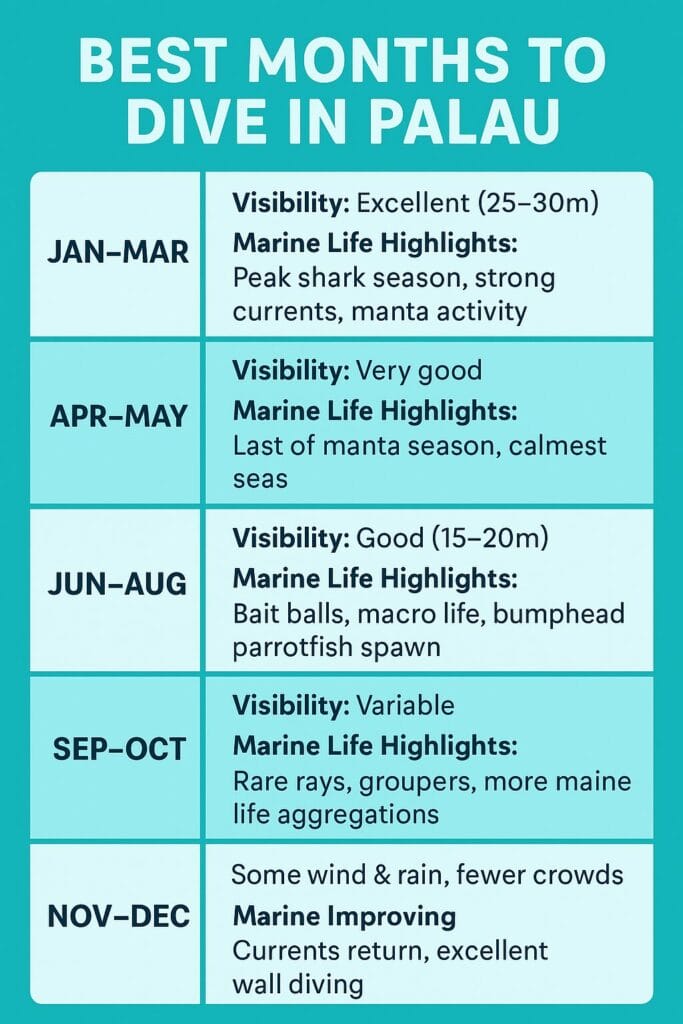
📌 Best overall months: February, March, April
🦈 Best for sharks: January to April
🧡 Best for mantas: January to April (esp. at German Channel)
🪸 Best visibility: March to May and November to early June
📷 Best for wide-angle photo ops: Feb–May (light + clear water)
🗺️ Dive Site Planning Tips — How We Time Every Drop for Maximum Magic
At Palau Dive Adventures, we don’t leave anything to chance—especially when it comes to your dives.
Every dive site has its own ideal timing, and we’ve spent years mastering how to read the tides, moon cycles, and seasonal patterns to deliver unforgettable dives day after day.
Whether you’re chasing sharks at Blue Corner or mantas at German Channel, timing is everything. Here’s how we plan the perfect dive experience—and how you can make the most of it.
🕓 Tides & Currents: Nature’s Dive Schedule
Palau’s world-famous currents are driven by tides and moon phases. Here’s how we use that to your advantage:
Incoming tide brings in crystal-clear ocean water and pelagics — ideal for sites like Blue Corner and New Drop Off
Outgoing tide fuels thrilling drift rides through sites like Ulong Channel and German Channel
Slack tide is often best for cleaning stations and calmer setups—perfect for manta encounters
Moon phase planning: Stronger currents during new/full moons mean more shark and spawning activity
Our crew checks tide charts and weather every day, then builds the dive plan to hit each site at its best window.
🛥️ Daily Dive Flow at Palau Dive Adventures
A typical day with us includes:
Early morning departure (around 8 AM) from your hotel or the dock at Palau Royal Resort or Palau Pacific Resort
Two morning dives timed for peak current clarity or feeding action
Relaxing lunch stop in the Rock Islands (surface interval = island time!)
Third dive tailored to your preference—drift, wall, wreck, or something special
Optional fourth dive (sunset or night), like Mandarin Fish Lake or Chandelier Cave
Return by 4–5 PM after a full day of adventure
🧭 Site Selection: Balancing Conditions & Crowd Control
We plan our departures and dive timing carefully to reach the best sites before the crowds, giving you a more relaxed, uncrowded experience..
If Blue Corner is too packed, we might pivot to New Drop Off or Siaes Corner
Want something more serene? We know secret spots with coral gardens or micro life
You won’t just dive famous sites—you’ll dive them at their best, often with fewer bubbles in your photos.
🧑🤝🧑 Grouping by Skill Level
At PDA, we match groups based on experience:
Advanced divers: Expect sites like Peleliu Cut, Blue Holes → Blue Corner combo, or deeper wrecks
Newer divers: We’ll start with calmer sites like Short Drop Off or Ulong channel, and gradually build up
And if it’s been a while since your last dive, we’ll ease you in with a refresher or reef hook practice before going full drift.
🪼 Marine Life Timing: Your Front Row Seat to Nature’s Shows
We time our dives to sync with peak marine behavior:
Mantas at German Channel: Best during plankton-rich incoming tides
Shark action at Blue Corner: Incoming tide + full moon = shark highway
Spawning dives: Around full or new moons, early dawn. Ask us—we track lunar cycles.
When you’re with us, you won’t miss a beat (or a spawning frenzy).
🚩 Safety, Gear & Support
We take safety seriously:
Reef hook briefings & practice before drift dives
SMBs required and provided—we train you on how to use them
Oxygen, radios, and first aid always onboard
Dive computers strongly encouraged (multi-level dives are the norm here)
Nitrox available (and highly recommended for 3-dive days)
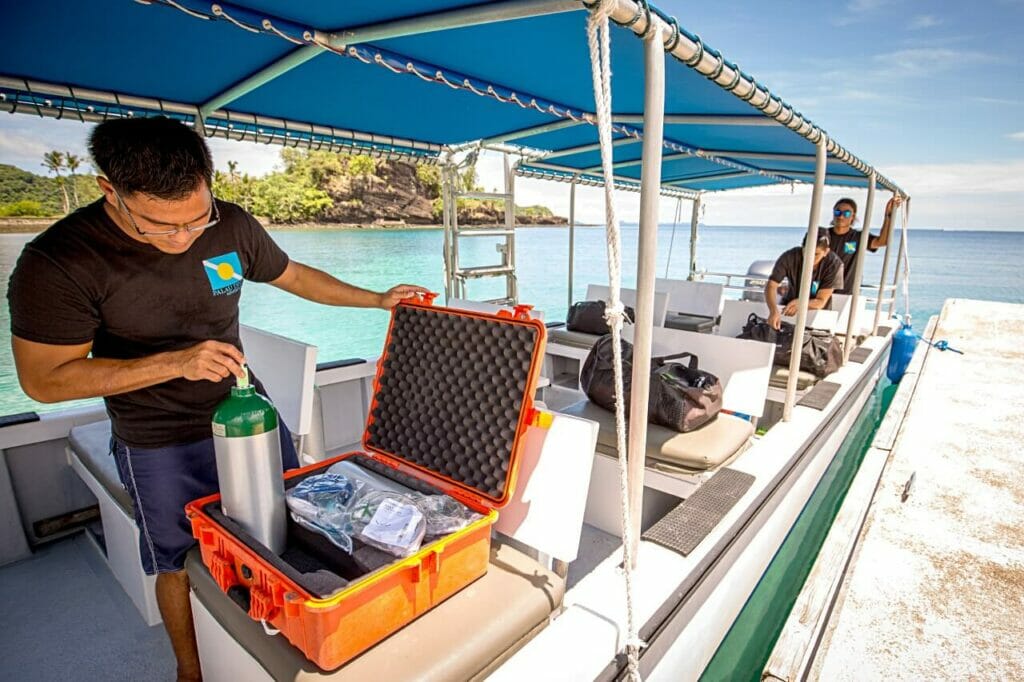
🏝️ Bonus: Surface Intervals That Rock
Literally. Our mid-day breaks often include:
A beach lunch on Survivor-famous Ulong Island
A detour to Jellyfish Lake or Milky Way Lagoon
A moment to soak in the UNESCO-listed beauty of the Rock Islands
It’s not just about what’s under the water—your Palau adventure includes everything in between.
🌺 Final Thoughts — Plan the Dive Trip of a Lifetime with Palau Dive Adventures
Palau isn’t just another dive destination—it’s a living, breathing underwater spectacle.
From fierce shark drifts to tranquil coral gardens, glowing caves to WWII wrecks, it’s a place where every dive feels like the highlight of your year.
But with so many sites, shifting currents, and seasonal nuances, timing is everything.
That’s where we come in.
At Palau Dive Adventures, we’re not just your guides—we’re your dive partners, local experts, and ocean stewards.
We’ve spent years learning how to match the right sites to the right tides, the right fish to the right moon phase, and the right dives to the right divers.
Our mission? To help you experience the best of Palau—safely, smoothly, and spectacularly.
Here’s What You Can Expect When You Dive with Us:
Small groups with personalized attention
Expert planning based on tides, marine behavior, and weather patterns
Top-tier guides and instructors who know when and where the magic happens
Eco-conscious diving that protects the reefs we love
Surface time that shines—beaches, jellyfish lakes, secret spots
Whether you’re here for mantas, macro, walls, wrecks, or just the wonder of it all—we’ll help you make the most of every moment.
Palau is famous for its drift dives and dynamic water movement—but don’t worry, we plan each dive based on tides, moon phases, and your experience level. On current-heavy dives like Blue Corner or Peleliu Cut, we use reef hooks to stay put and watch the show safely. If you’re comfortable in the water and follow your guide’s instructions, you’ll be amazed, not overwhelmed.
A reef hook and SMB (surface marker buoy) are must-haves here. We also recommend a 3mm full wetsuit, dive computer, and reef-safe sunscreen (chemical sunscreens are banned in Palau). Gloves are not allowed by law. If you don’t have certain items, we’ve got gear available to rent or purchase.
You’ll see reef sharks year-round—Palau is a shark sanctuary. For manta rays, visit between January and April when mating and cleaning activity peaks at German Channel. Sharks are especially active around full moons, and we time dives accordingly to put you in the action.
Most of the time, yes! In the dry season (Nov–Apr), visibility can exceed 30 meters. During the wet season (Jun–Sep), visibility may drop to 15–20 meters due to plankton, but that’s when mantas feed. Either way, there’s always something amazing to see.
Yes! We regularly visit Chandelier Cave, especially as a third dive or in the late afternoon. While scuba isn’t allowed in Jellyfish Lake, we include it as a snorkel stop between dives on request. Both are unforgettable experiences—just let us know you’re interested.
Yes, and we help you time it right. Full and new moons bring spawning aggregations of bohar snapper, bumphead parrotfish, and even camouflage groupers. If you’re into macro, we’ll show you mandarinfish, ghost pipefish, nautilus, and more.
At Palau Dive Adventures, we read the tides, track the moon phases, coordinate with other operators, and use years of local knowledge to hit every site at its peak moment. Whether it’s incoming tide at Blue Corner or slack tide at German Channel, we time it for optimal conditions—not just convenience.
Not all dives are fast! While Palau is known for drifts, we also dive calmer sites like Big Drop-Off, Short Drop-Off, and Mandarin Fish Lake, which are ideal for relaxed cruising, macro hunting, and buoyancy control practice.
We usually do three dives per day, with a scenic lunch stop in the Rock Islands. If conditions allow, we can also add a fourth dive like Chandelier Cave or a sunset mandarin fish dive. We handle everything—from tide timing to snacks on board—so you can just enjoy the ride.





